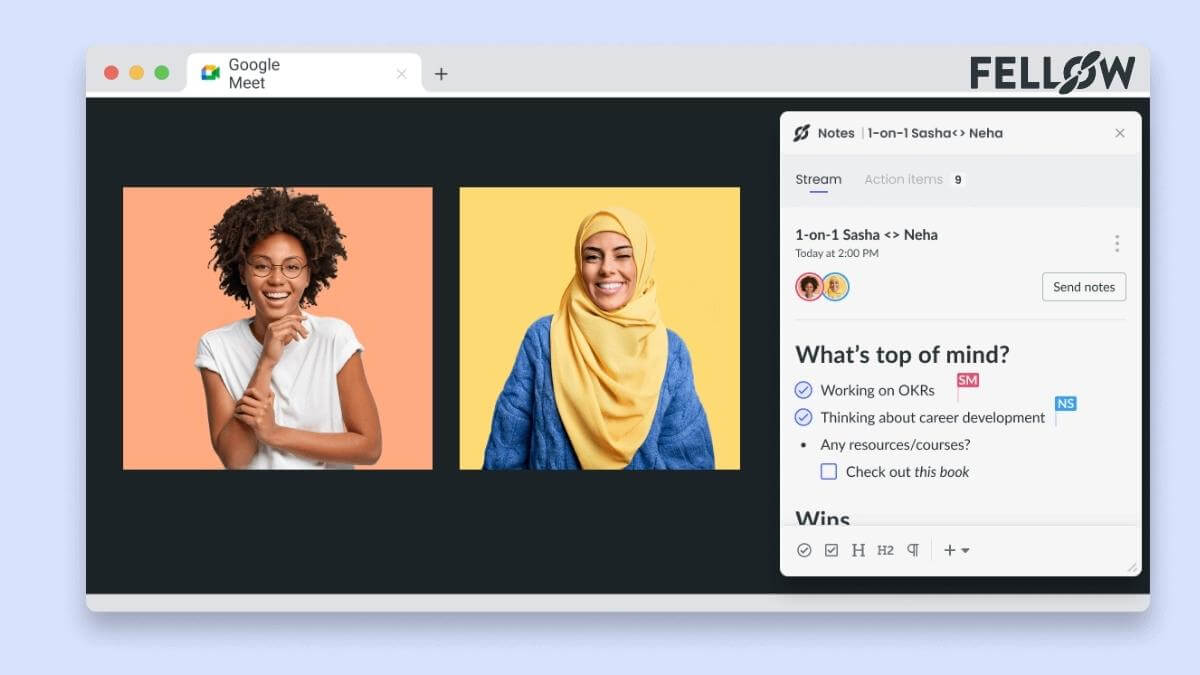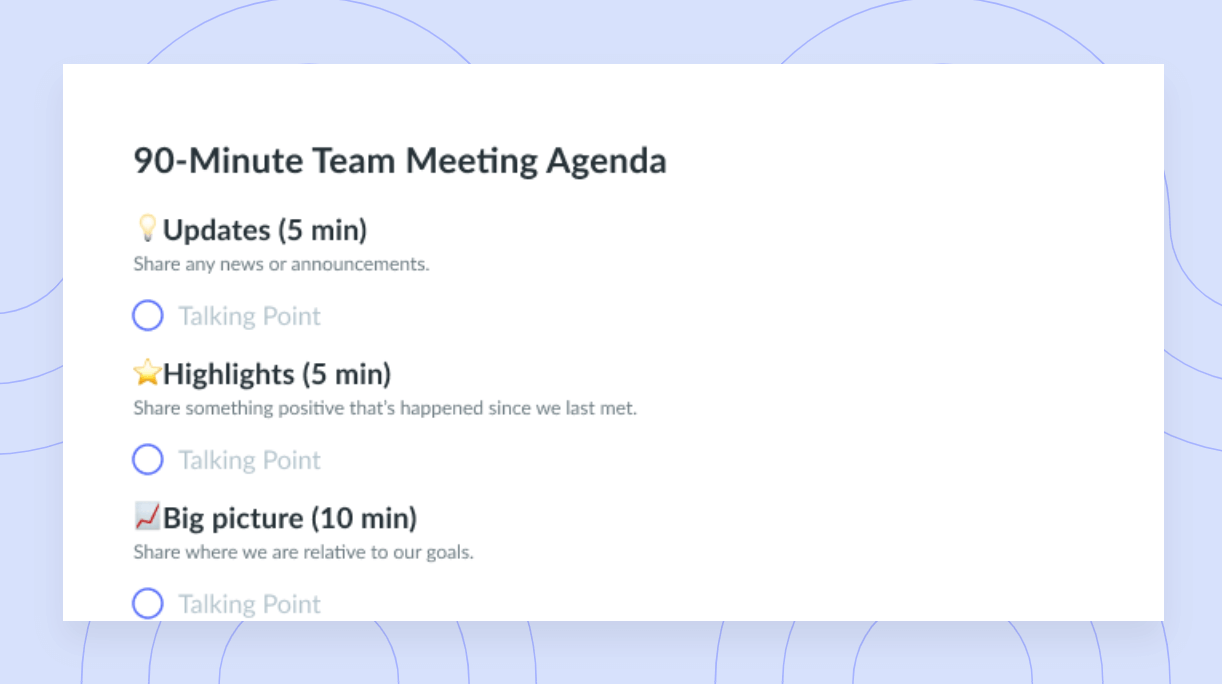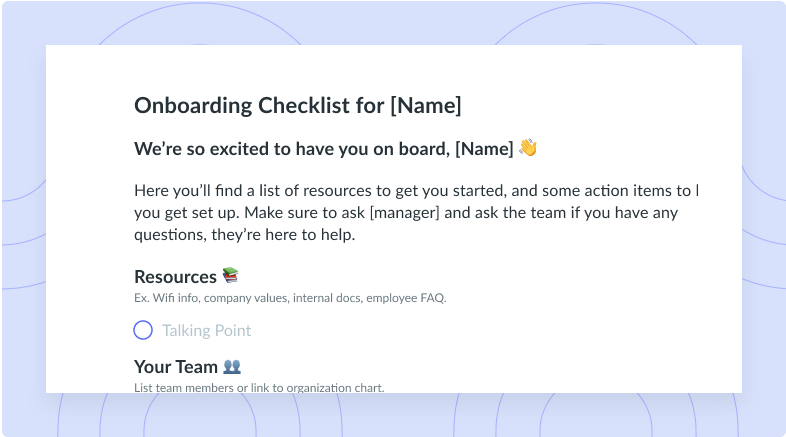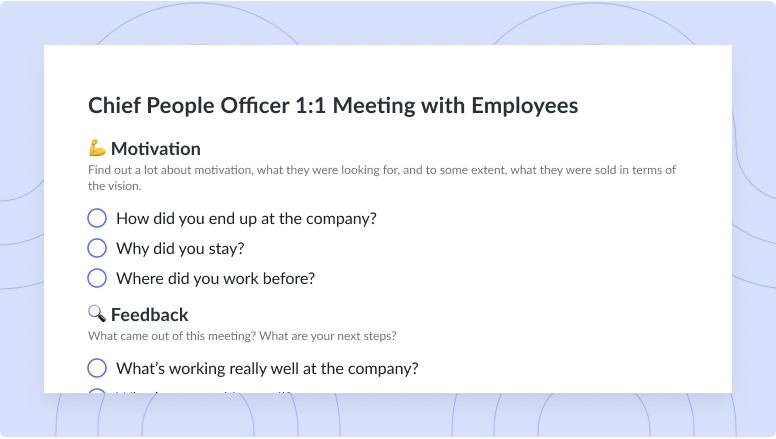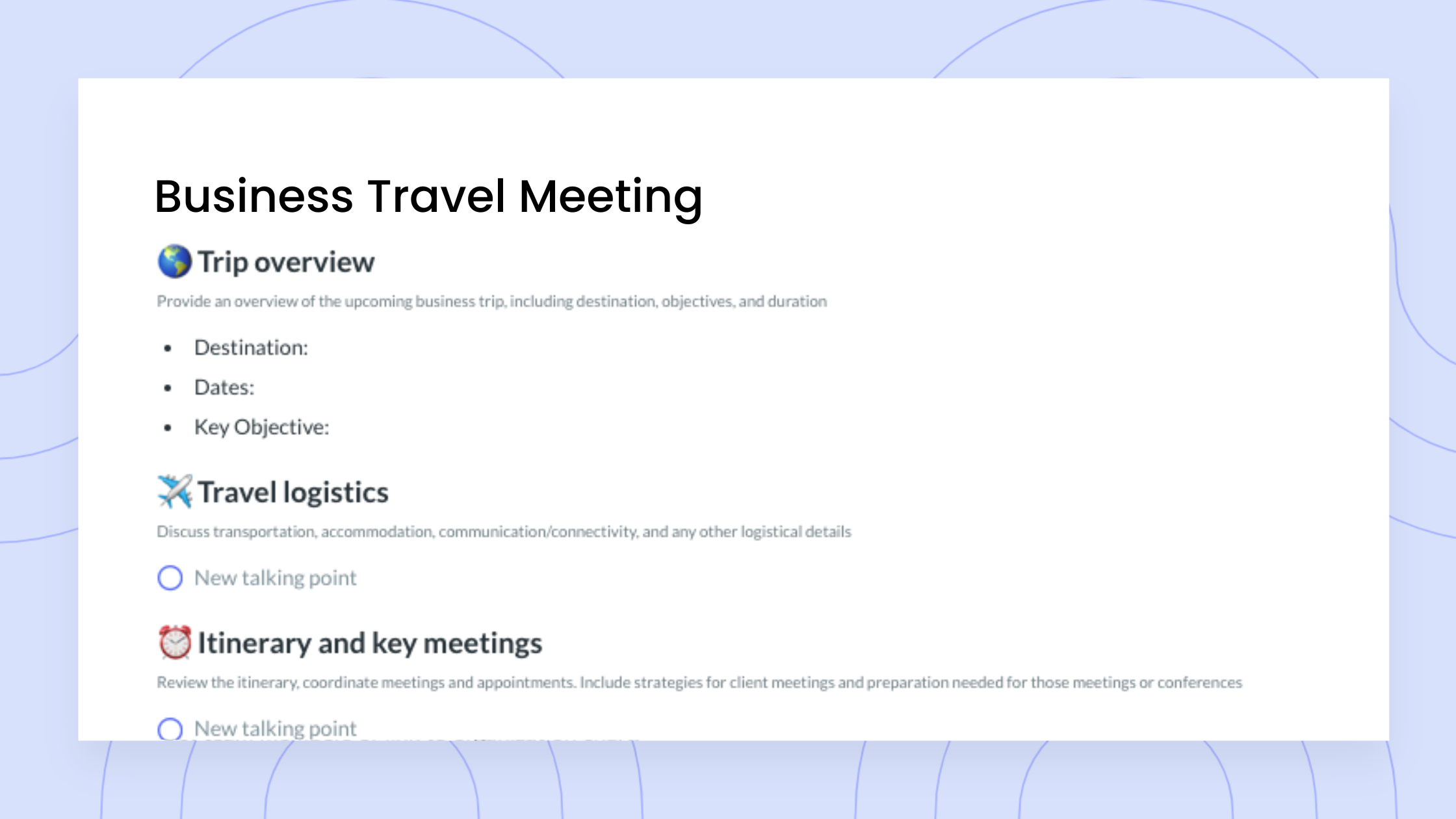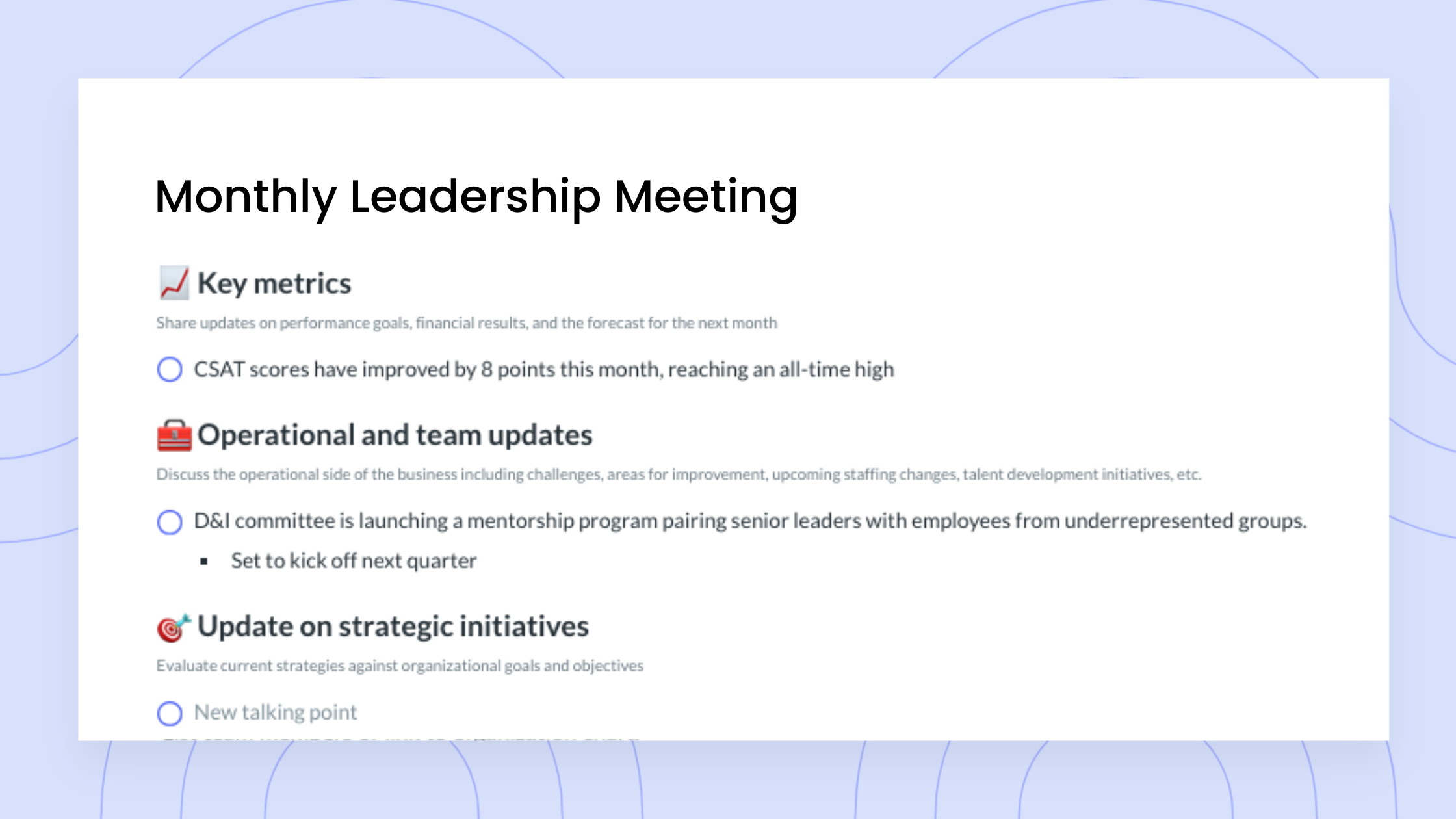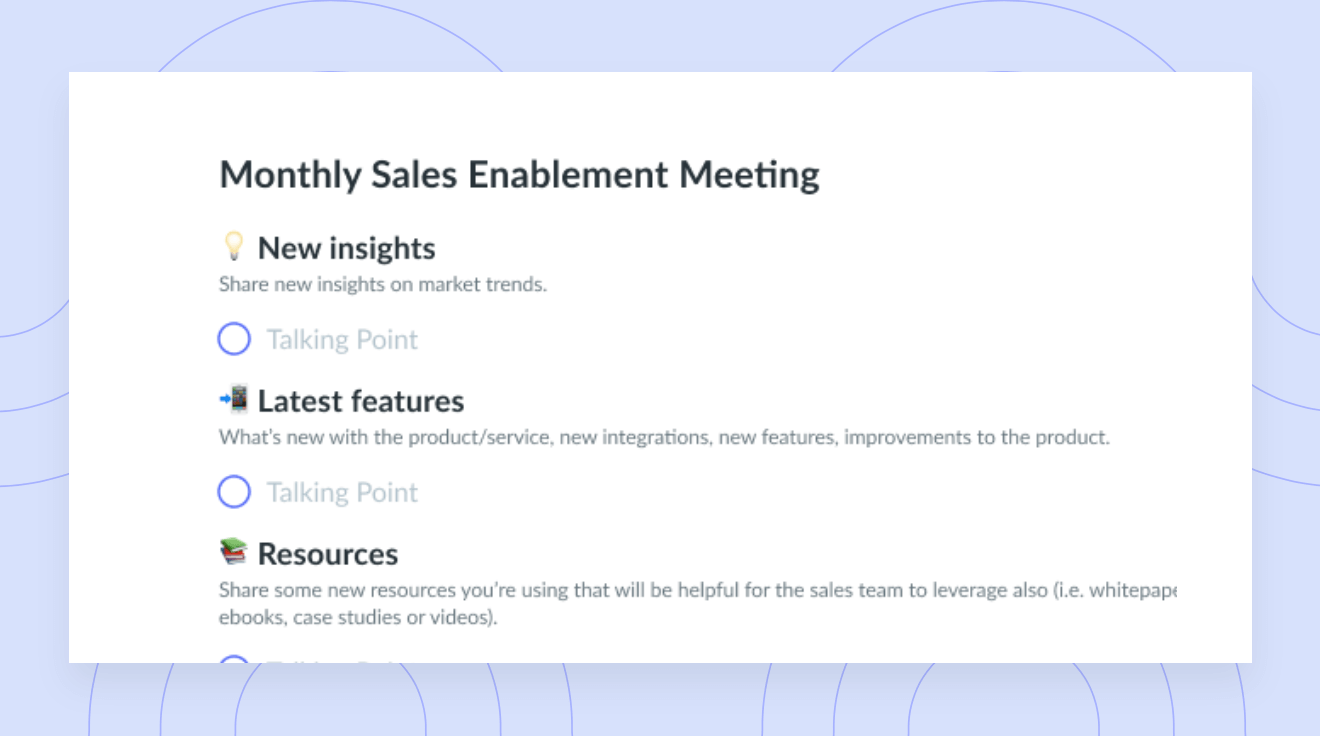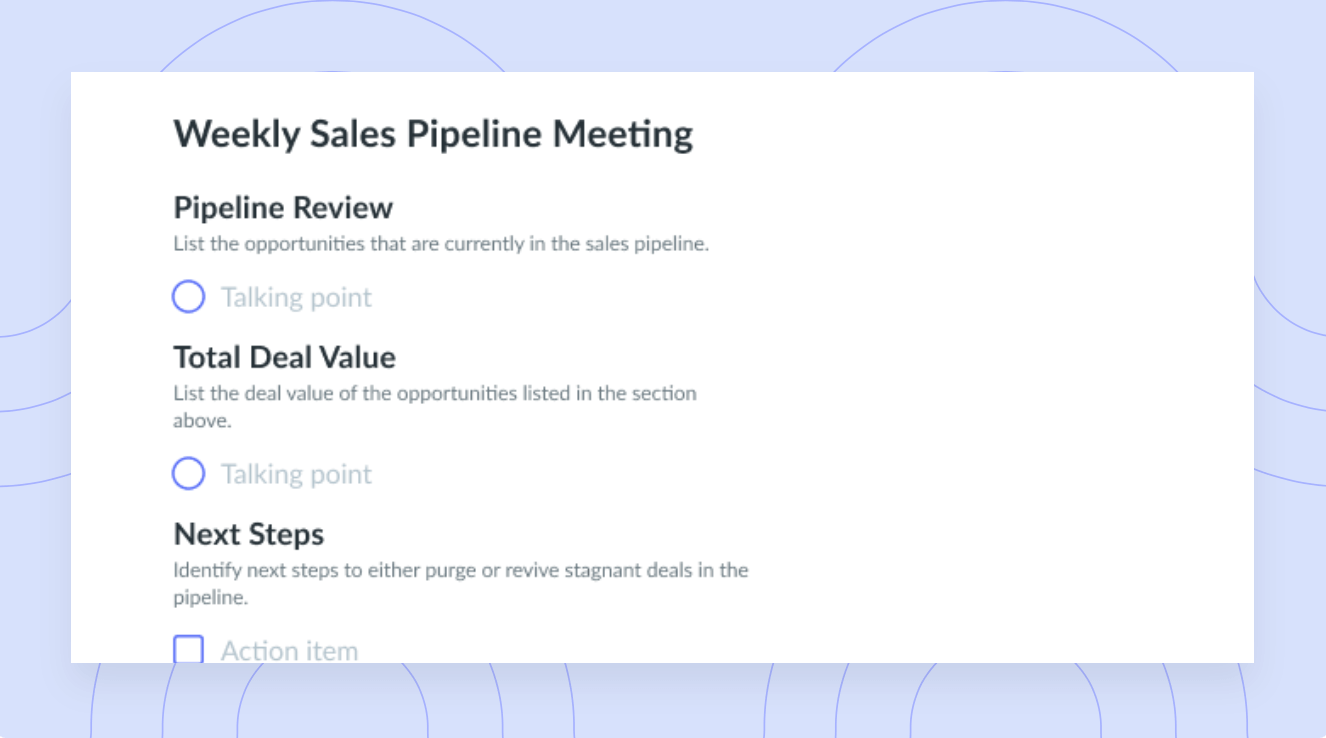AI Meeting Assistants: 6 Tips + Best Tools (2024)
Learn what AI meeting tools are and see a free guide to help you find the best new AI meeting tool this year!
Artificial intelligence (AI) is all the rage! Already, 81% of employees said using AI in their roles has improved their work performance. If you’re looking to reap the same benefits but you’re new to integrating AI into your workflow, you’ve come to the right place! Here, we’re going to share some of the best ways to use AI tools to assist your meetings, and a few tips for seeking out the best tool for your team.
What are AI meeting tools?
An AI meeting tool can supplement any aspect of your meetings. Typically, they work best with remote meetings as they can pull information from the virtual call and then transfer data, assign tasks, create summaries, or give teams insights into their meeting efficiency.
AI uses natural language processing (NLP) and machine learning (ML) algorithms to determine what content means, what to do with it, and how to recommend improvements for that content in the future. That’s why the possibilities for most AI meeting assistant tools go far beyond your meetings!
Why are teams using AI meeting tools?
More teams are relying on AI meeting tools as they provide huge savings in time, especially when it comes down to the boring, administrative work when hosting a meeting. The cost of running a meeting also gets significantly higher with more participants or involvement from senior leadership members. Integrating AI into meeting management can help improve productivity in meetings and help your company make more return on investment (ROI) on each call.

Experience seamless agenda creation, improved collaboration, and better meeting outcomes
Say goodbye to manually crafting agendas and welcome a more organized and focused meeting experience with Fellow’s AI-powered features!
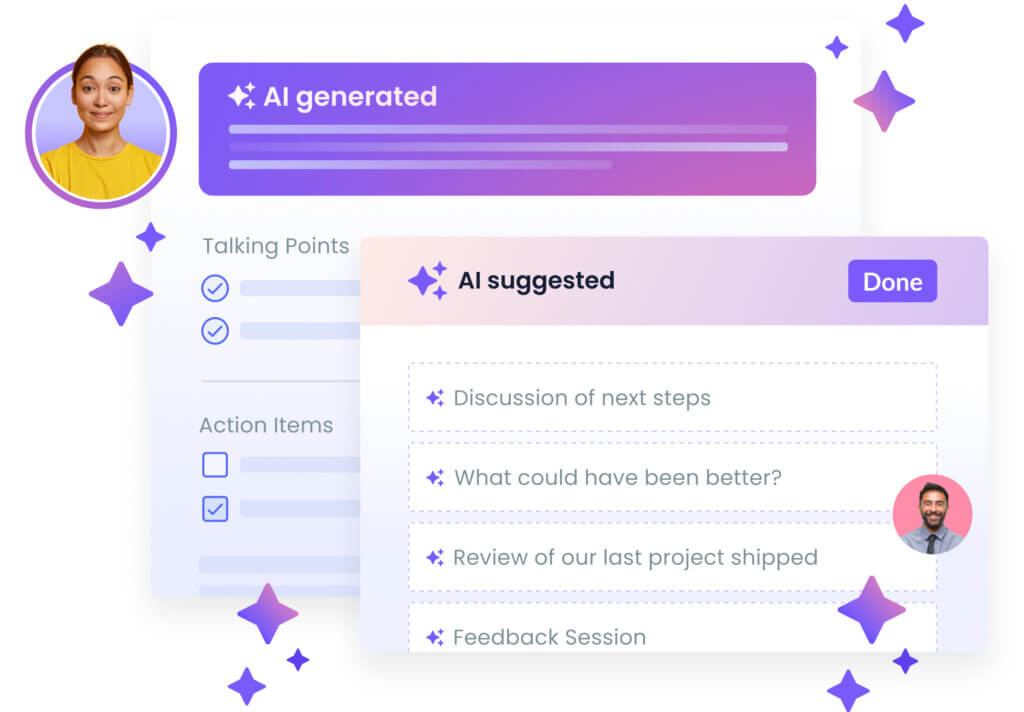
Benefits of using AI for meetings
1Better collaboration
If you’re working in a busy meeting—such as a brainstorming session or a call with a large number of participants—you might find it difficult to keep tabs on everything that’s being discussed. AI meeting tools can help by tracking the conversation and making summarized bullet points for after the call. Team members who aren’t able to participate in the live call can also use the summaries to quickly get caught up to speed at another time.
2Improved productivity
Lots of meeting time gets wasted on technical set-up issues, time spent trying to search for documents or remembering what happened in the last call, or writing meeting notes. On the flip side, using a meeting assistant tool can give you 16% of your time back, which is equivalent to 6 hours and 24 minutes of your average 40-hour workweek. That’s almost a full extra day to spend on other projects instead of meeting organization tasks!
3More insights and recommendations
There are some very powerful tools on the market, such as Gong, that can interpret the conversation and make suggestions for how to improve your next call. This can be super helpful for sales teams that are continuously trying to optimize their talk track, for example.
Another way that AI tools provide insights in meetings is by suggesting talking points based on action items in your previous calls, like what Fellow does. Not only does this help you remember where you left off in the last meeting, but it also gives you a fresh perspective on additional topics to talk about related to those points!
4Real-time language translation (for distributed teams)
Remote teams are frequently spread across multiple time zones and countries, meaning there are more language barriers in the workplace, too. AI meeting tools, like Otter.ai, can transcribe and translate the conversation on the fly. This is super helpful to ensure all team members can communicate and collaborate well. Not only does real-time transcription support colleagues who speak another primary language, but it also makes the workplace more accessible for those who need more time or extra support to understand ongoing conversations.
5Better sentiment analysis
Sales isn’t the only team that relies on sentiment analysis to gauge success, even though it is super helpful for knowing if they’re likely to close a deal. Product teams might also find it useful when conducting market research interviews with test users to see if the product feedback was generally positive or negative. Managers can similarly use it in one-on-ones or when announcing big changes to gauge the overall sentiments of the conversation.
A lot of team members, even if they have high emotional intelligence (EI), find it much harder to accurately assess emotions over remote calls, as it’s harder to see cues like body language. So AI steps in to provide this information for us based on the words and tonality we use in our calls!
What to look for when choosing an AI meeting tool
1Ease of use
If your team is new to AI meeting tools, you’ll want to consider how easy it will be for them to learn to use the one you choose. Teams with more exposure to new technology might have an easier time processing a complex product, while employees in older generations and organizations without modern tech stacks should opt for an intuitive, beginner-friendly tool.
2Integrations
Depending on how far and wide your tech stack reaches across your organization, your AI tool might even be able to help with a lot more than meeting assistance. Integrations help ensure that your meeting notes and action items get transferred into documentation, ticketing systems, Slack channels, email chains, or wherever else you store knowledge and processes on your team.
3Cost
The price range for an AI tool is very broad. There are a few overarching factors that impact the price of the tool, including the:
- Complexity of the features
- Rarity of the features
- Onboarding and customer support provided
- Number of users on the platform
- Number of integrations to other tools
- Frequency of use or volume of content put through the tool
- Additional resources (for example, templates) that are offered in the package
4Security
Security is one of the most overlooked aspects of technology today, yet it’s one of the most impactful decisions you can make. Working with any software product, AI-related or not, that doesn’t have proof of its security isn’t a great option. This exposes your company to the risk of a data breach down the line, and that can cost millions of dollars to recover from.
5Features
The complexity and rarity of features within the tool will impact pricing greatly, and will likely also impact how easy it is to onboard and use the tool. If you’re looking to cut down on costs or have something easy to get started with, consider more basic features like meeting note summaries, automatic forwarding of call transcriptions, and generated recommendations for talking points based on previous meeting agendas.
6Scalability
Look for a product that will grow with your team. If the pricing is high now and your team is small, consider if the higher price for a lot more users is something you’re willing to spend. On the integration front, you’ll also need to consider how each AI tool pairs with the existing tech stack you have, as well as the new tools you want to adopt down the line. Thinking ahead will save you from having to switch tools in the future, which can make you risk losing precious insights collected by your first AI meeting tool.
The best AI meeting tool
With Fellow’s AI-powered features, you can take your meeting notes to the next level. Suggested agendas built at warp speed for prepared, organized meetings, effortless meeting recording and transcription to share with your team, simplified meeting summaries and key points for efficient knowledge sharing, and captured and synced action items to ensure nothing falls through the atmosphere is just the beginning!
Unlike other AI tools, Fellow takes it one step further by being your all-in-one meeting productivity tool! With Fellow, you can collaborate on meeting notes, save templates for recurring meetings, assign clear action items and takeaways, and request feedback from meeting attendees. Plus, to further enhance your note-taking, Fellow syncs your work calendar and notes, making it easy to find the corresponding notes for each meeting. For example, Fellow integrates with Google Chrome to access your meeting notes right inside of Google Meet calls and your Google Calendar to supercharge team meetings and 1-on-1s without leaving the tools that you are already using.
- Meeting agenda templates. A library of prebuilt meeting templates is available for any department or meeting type. These are helpful to get started with organizing your meeting talking points efficiently.
- Meeting notes and action items. After a call, you can distribute a summary of your meeting including notes, action items, and a feedback survey to all participants—with the push of a single button. On the next call, Fellow can automatically forward any unresolved talking points or action items so they’re not left forgotten.
- Integrations with major apps. Get access to your meeting documentation in your other tools, such as major video conferencing platforms like Slack, Google Calendar, and Zoom. Having your meeting agenda integrated right into your video call makes breezing through meeting topics much easier.
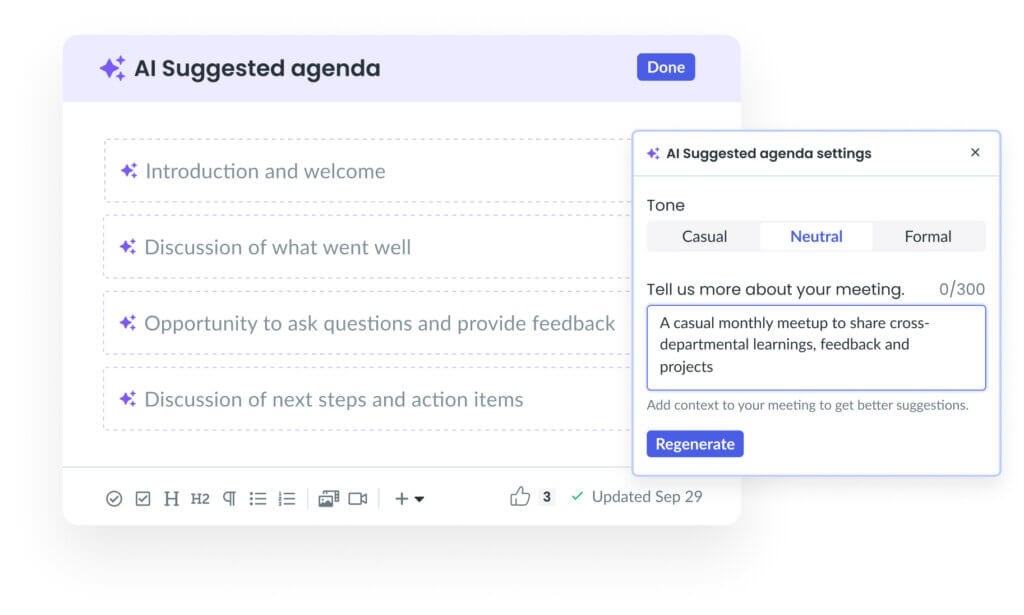
Parting advice
When you first hear of AI, you might think of something high-tech and daunting to get started with using every day. This is especially true if you don’t have a technical background. But AI meeting tools are actually quite easy to integrate into your meeting organization workflow and can help you with things like improved collaboration, automatic translation into other languages for your team members, and time management (especially when they give you nearly a full day back into your schedule). With so many products out on the market, it’s worthwhile to spend some time researching and testing a few free trials before you land on the product that’s right for your team.






